
Hello! I am a former Astrophysics graduate student at Harvard University, transitioning into a meaningful high-impact career in data science and open to work.
Here you can find my data science resume and my academic CV. Feel free to check out my python packages and other code on my GitHub .
My masters work used Bayesian nested sampling to model large galaxy datasets in Python under Prof. Edo Berger and Prof. Charlie Conroy.
Coding Interests
Python | Data Visualization | Inference Modeling
Feel free to browse a selection of my research projects below.
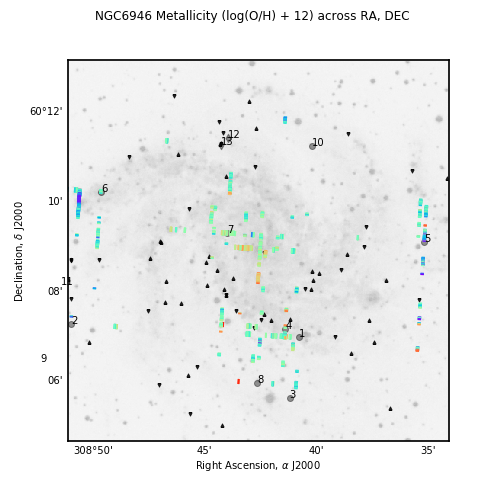
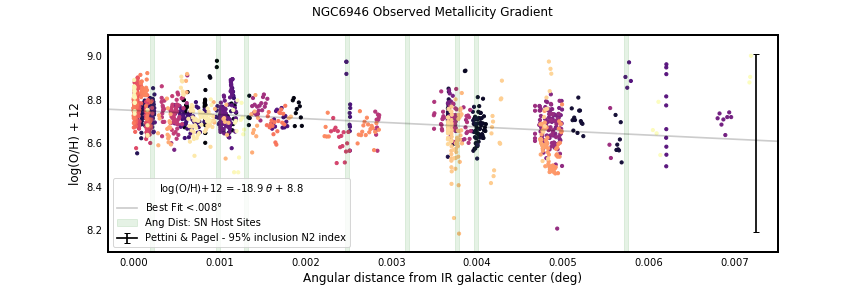
Studying Supernovae Environments in the Fireworks Galaxy
Prof. Emily Levesque and my project ultimately aims to determine what makes the progenitor environments of galaxies so prone to high CCSN production. Using slit spectra from the APO 3.5m DIS instrument, our 52 different slit positions have yielded metallicity profiles at more than 100 different sites across the galaxy.
Play with NGC6946's observed metallicity profile in 3D here.
I developed the Apall Multi-Slit Extension code for automated aperture extractions on reduced and calibrated slit spectral data.
A Spectrophotometric Survey of the Supernovae-Rich NGC 6946 Galactic Host Environments is set to be published this winter. This work was presented at the American Astronomical Society 231st Meeting, thanks to support from an AAS FAMOUS Travel Grant.
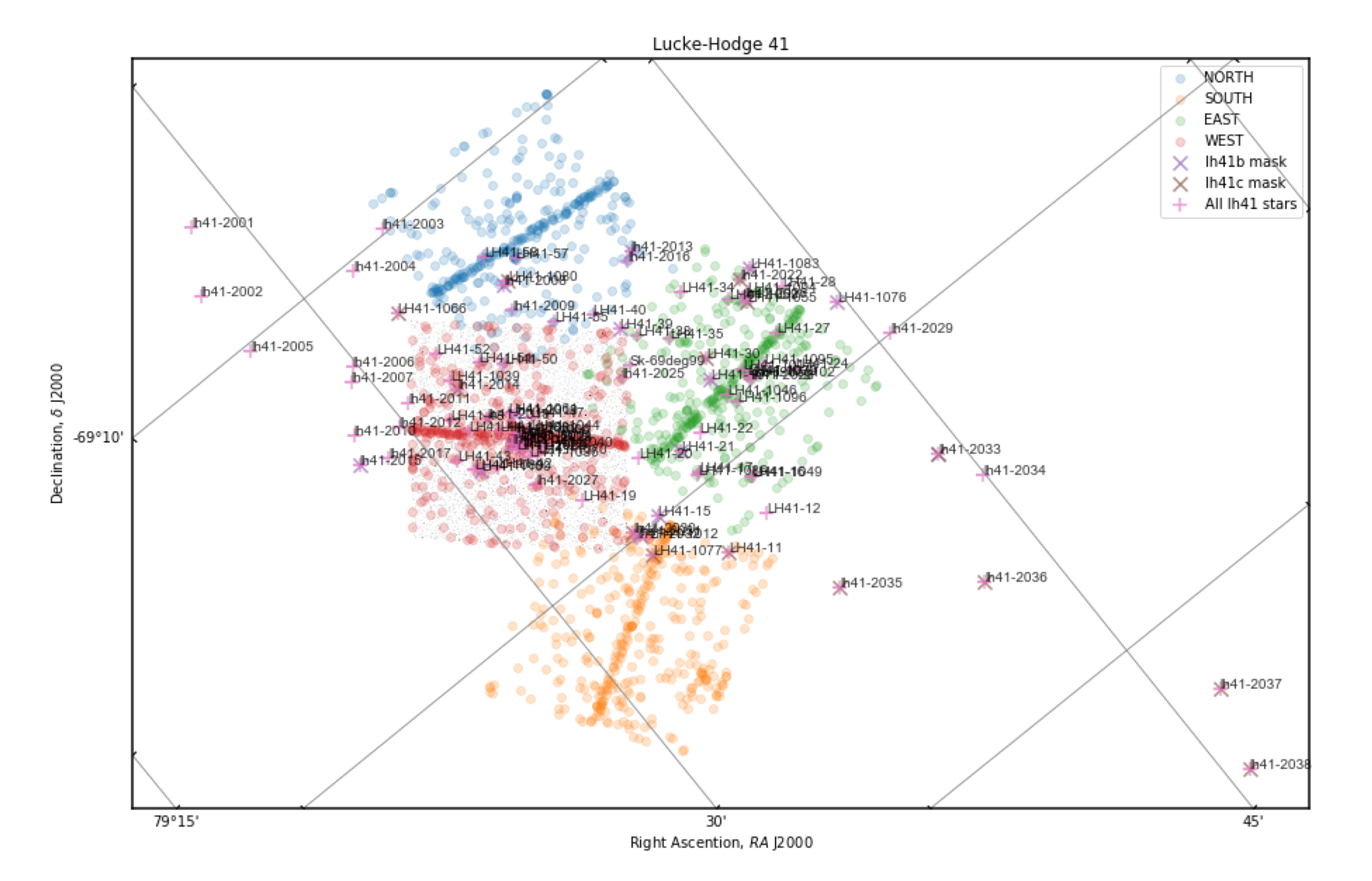
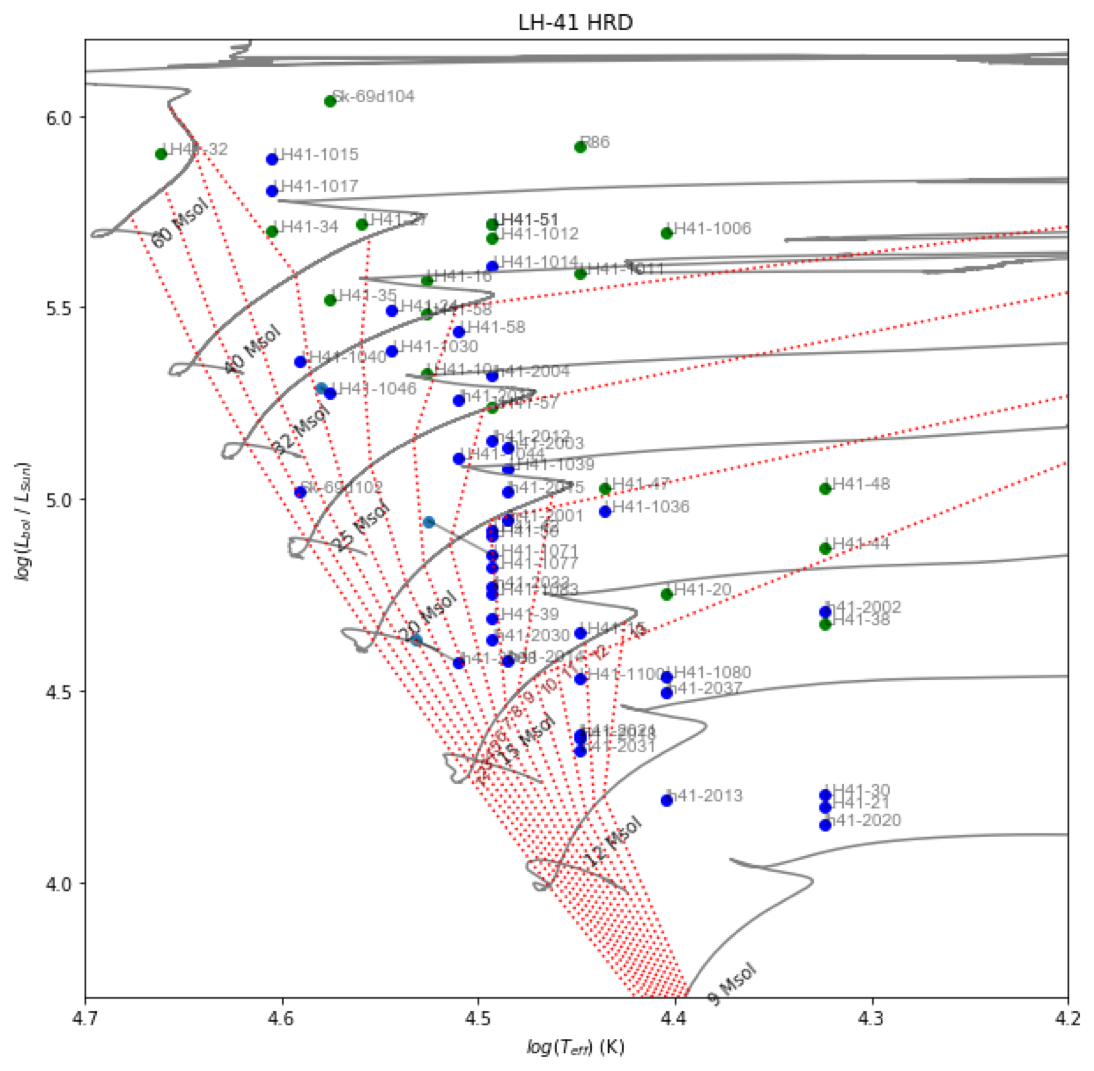
The Lucke-Hodge 41 OB Star Association
Characterizing OB Star Populations in the Large Magellanic Cloud
Using Hubble WFC3 Photometry and MaiGE and IMACS multi-slit spectra from the 6.5m Magellan Telescope, I determined the effective temperatures and luminosities of ~40 OB stars within LH-41 in the LMC, working with Prof. Philip Massey at Lowell Observatory. Furthermore, I modeled mass loss rates and surface gravity using FASTWIND and developed a program to match star locations to Hubble field photometry.
Our initial Hurtzsprung Russel Diagram showed that LH-41 housed a population of massive O and B stars that were not in fact coeval.
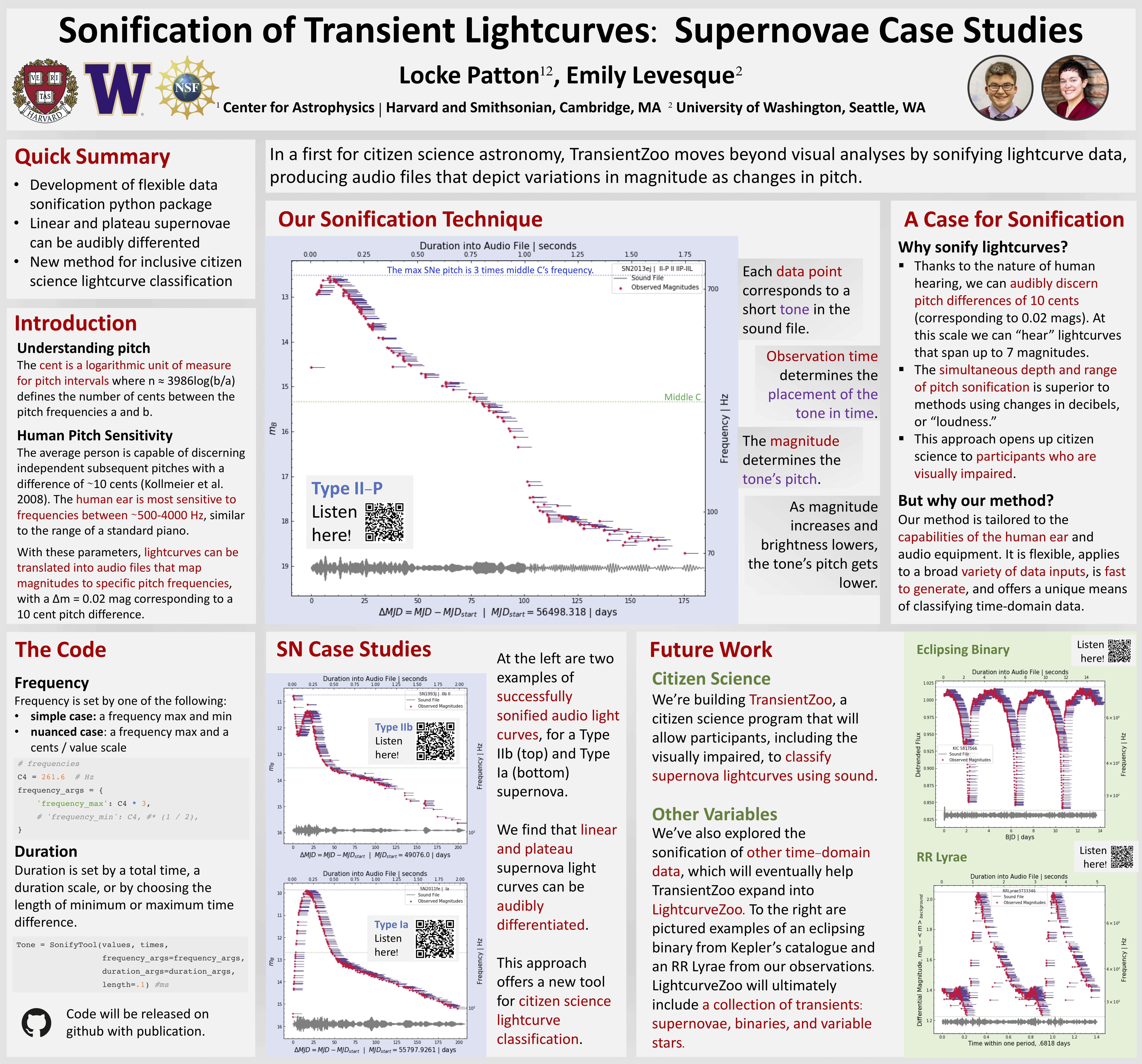
Sonification of Transient Lightcurves
Prof. Emily Levesque and I are building TransientZoo, a citizen science program that will allow participants, including the visually impaired, to classify supernova lightcurves using sound. In a first for citizen science astronomy, TransientZoo moves beyond visual analyses by sonifying lightcurve data, producing audio files that depict variations in magnitude as changes in pitch.
Listen to SN2013ej here! Our sonification code is up and running, and will be published on github soon.
Find a detailed twitter thread here with more examples.
This work was presented at the American Astronomical Society 233st Meeting, and won a Chambliss Graduate Prize.